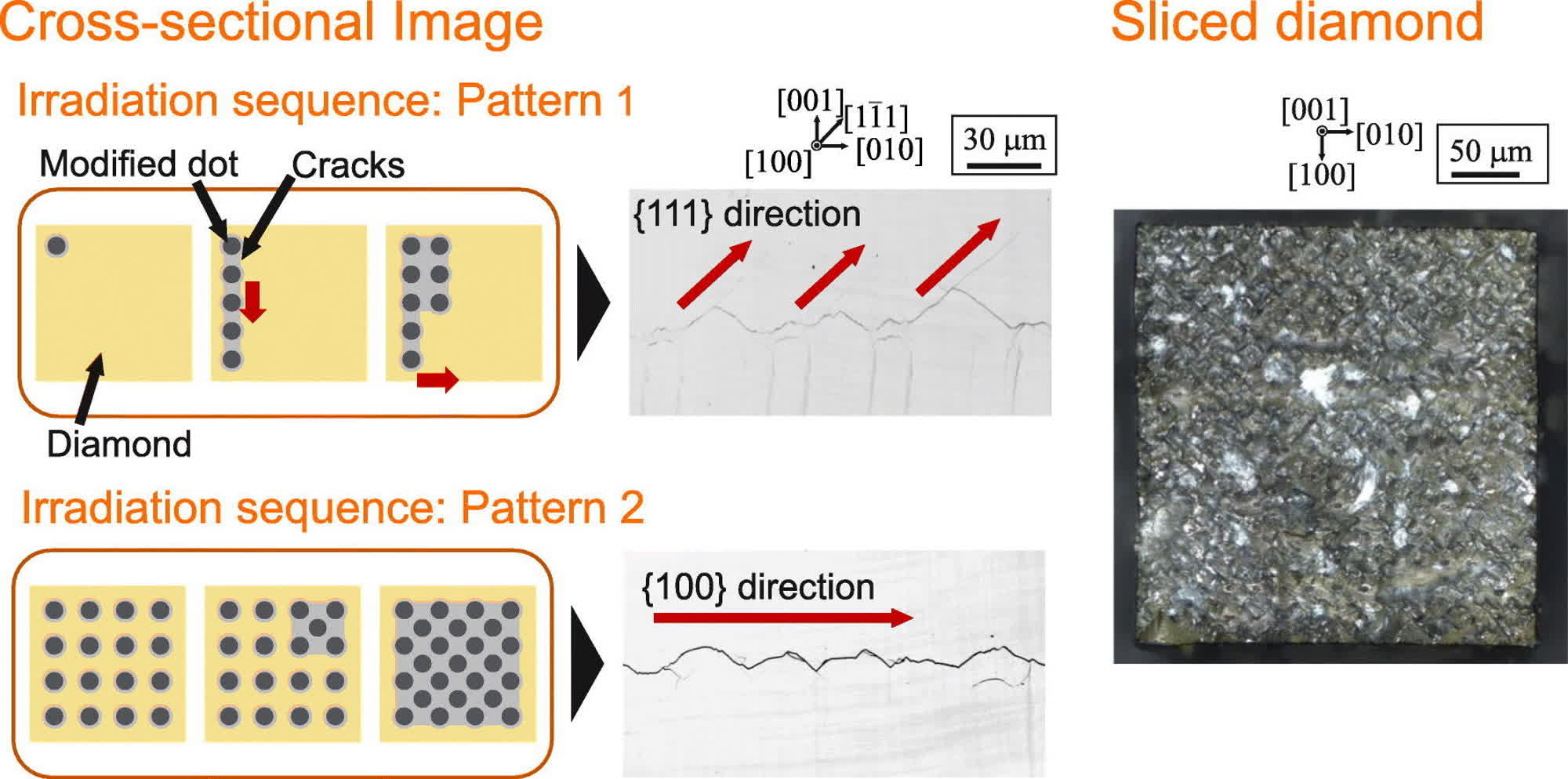TechSpot is celebrating its 25th anniversary. TechSpot means tech analysis and advice you can trust.
In context: Diamonds are among the most promising materials for tech applications, such as fast telecommunications and power conversion in electric vehicles or power plants. However, diamonds aren’t easy to work with, as they tend to crack when trying to cut wafers out of them.
A new laser-based technique developed by a team of Japanese scientists from Chiba University seemingly provides a way to “effortlessly slice” diamonds along the optimal crystallographic plane. The research was recently published in the journal Diamond and Related Materials, and it could assist the semiconductor industry in adopting one of the sturdiest materials known to man.
Diamonds have attractive properties for semiconductor applications, the researchers said, as they have a wider bandgap than silicon. They could theoretically be employed to create more efficient semiconductors, capable of working at higher voltages, frequencies, and temperatures. However, diamonds are challenging to adapt into semiconductors because there is no efficient technique to slice them into thin wafers.
Professor Hirofumi Hidai and his team at Chiba University are proposing a solution to the problem: a laser-based slicing process that can cleanly cut diamonds without breaking them. The researchers stated that the new technique prevents the propagation of undesirable cracks during the laser-cutting process by focusing short laser pulses onto a narrow cone-like volume within the material.

The laser pulses turn diamond into amorphous carbon with lower density levels. Therefore, the regions shot with the laser undergo a reduction in density and crack formation, Professor Hidai said. The researchers created a grid-like pattern to guide the propagation of cracks along the designated cutting path, while a sharp tungsten needle was used to “easily” separate a smooth wafer from the rest of the diamond block.
Chiba University said the new proposed technique could be a pivotal step towards turning diamonds into a “suitable semiconductor material” for future, more efficient technologies. Professor Hidai remarked how slicing diamonds with a laser “enables the production of high-quality wafers at a low cost” and is indispensable for fabricating diamond semiconductor devices.
The Japanese research brings the industry closer to realizing diamond semiconductors for various technology applications, Hidai said. The laser-sliced wafers could improve the power conversion ratio in electric vehicles and trains.
Chiba University and Hidai’s team are not alone in their effort to turn diamonds into semiconductors. Amazon Web Services recently partnered with Element Six (a subsidiary of the De Beers diamond consortium) to create synthetic diamonds and use them in quantum cryptography. The two companies are attempting to exploit photon-absorbing defects in diamonds to create a global network for quantum key distribution.
>>> Read full article>>>
Copyright for syndicated content belongs to the linked Source : TechSpot – https://www.techspot.com/news/99670-japanese-researchers-cut-semiconductor-wafers-diamonds-new-laser.html





























